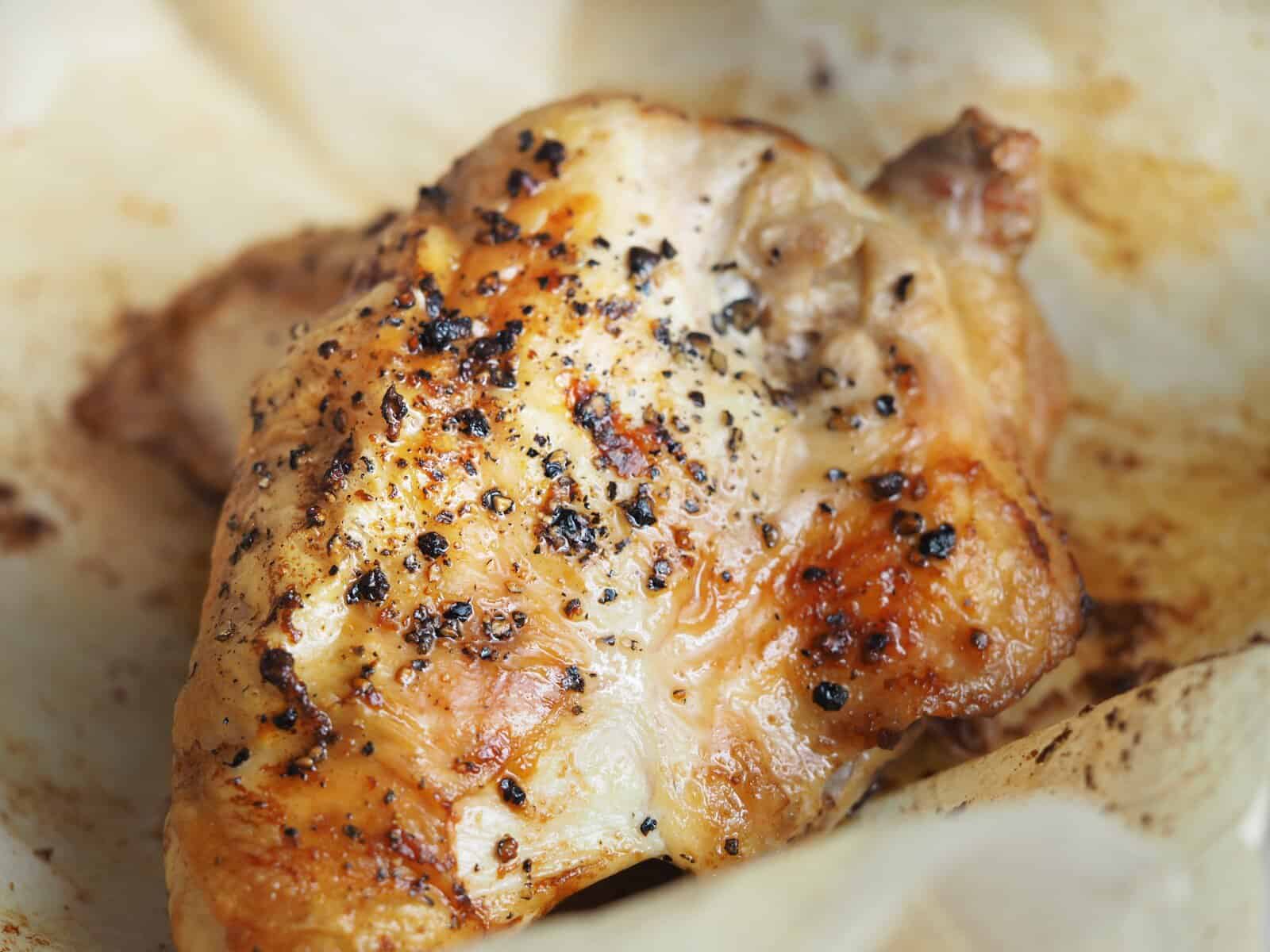Protein in Chicken Breast
Whether you’re doing a low-carb diet, keto, or just watching your macros, you may want to know how much protein is in chicken breast, versus other cuts of chicken.
Chicken breast contains a whopping 9 grams of protein per one ounce. The high protein in chicken breast contributes to your muscles, brain, immune system health.

Eating chicken is one of the best ways to get the nutrients you need for a healthy body! The protein and calories in chicken breast makes it a wonderful dietary choice. Plus, there are just SO MANY great ways to cook chicken!
Eating foods high in protein keeps you fuller longer since it takes more time to digest whereas carbohydrates digest quickly and leave you hungry shortly after eating them. Chicken contains a high amount of protein that can help you create the diet you need and still create amazing meals.
Let’s cover some chicken breast nutrition facts so you know exactly how to calculate your next meal.
How Much Protein is in Chicken Breast?
Chicken breasts have per ounce = 9 grams of protein
Skinless and boneless: 3.5 ounces (100 grams) = 31 grams of protein
Protein in 6 ounces = 54 grams of protein
*Tip: Whether the chicken is cooked, raw, grilled, baked, or braised, the protein is all the same.

Other cuts of chicken also pack a lot of punch when it comes to protein.
Protein in Chicken Thighs
Chicken thigh per ounce = 7.5 grams
Boneless and skinless: 3.5 ounces = 26 grams
Protein in 6 ounces = 45 grams
Protein in Chicken Wings
Protein in chicken wings per ounce = 8.6
Boneless and skinless: 3.5 ounces = 30.1
Protein in 6 ounces = 51.6
Protein in Chicken Legs
Protein in chicken leg per ounce = 8 grams
Boneless and skinless: 3.5 ounces = 28 grams
Protein in 6 ounces = 48 grams
*Note: There are 28.35 grams in an ounce
- 3.5 ounces = 99.23 grams
- 4 ounces = 113.4 grams
- 6 ounces = 170.1 grams
Ways to Cook Chicken:
Since chicken is high in protein and Vitamin B it fits perfectly into most diets (including keto). There are many ways to cook chicken that keeps it healthy without compromising flavor.
One of the best ways is to liberally season it with spices and herbs. Different cuisines have varying flavor profiles that you can try.
Mexican: Chile powder, cayenne pepper, cumin, oregano, cilantro
Italian: Parsley, oregano, rosemary, garlic, basil, lemon, red pepper flakes
Indian: Curry powder, garam masala, tamarind, cumin, coriander, fennel, saffron
Chinese: Ginger, five-spice, garlic, lemongrass, Thai basil, cilantro, lime, hot chili peppers

How Protein Supports the Body
Amino acids are the foundation of protein consisting of 20 components. Nine are essential and must be broken down from the food you eat and can’t be replicated. The rest are non-essential and can be synthesized. Your body needs all 20 amino acids to function to the best of its ability.
Proteins from animal products, like chicken, have the most complete essential amino acids. While proteins from plants are incomplete and require more than one source to make them complete.
Protein is found in animal products as well as plant sources. Here are some other foods you can eat to get the protein you need.
- Beans
- Red meat
- Milk
- Eggs
- Yogurt
- Fish
Other Health Benefits of Chicken
Chicken contains many healthy nutrients and is wonderful at keeping the body fueled. Here are some nutritional facts about chicken based on a three-ounce chicken breast and a 2000-calorie diet.
- Calories: 122
- Protein: 24 grams
- Fat: 3 grams
- Carbs: 0 grams
- Niacin: 51% of the Daily Value (DV)
- Selenium: 36% of the DV
- Phosphorus: 17% of the DV
- Vitamin B6: 16% of the DV
- Vitamin B12: 10% of the DV
- Riboflavin: 9% of the DV
- Zinc: 7% of the DV
- Thiamine: 6% of the DV
- Potassium: 5% of the DV
- Copper: 4% of the DV

Conclusion
Chicken is a great source of protein as well as many other nutrients for the body. It’s easy to cook and stay healthy by using herbs and spices and not adding much (if any) fat to cook it in.
It contains no carbohydrates and is an excellent source of complete amino acids. Chicken is one of the best options for getting the protein your body needs.